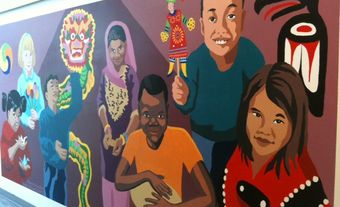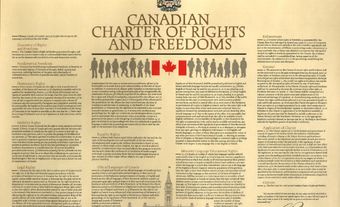The term “racialized” is a sociological concept closely related to racism. People seen as belonging to racialized minorities are people who could be perceived as being socially different from, for example, the racial or ethnic majority. In Canada, the term “racialized minority” usually refers to non-white people. The word “racialized” stresses the fact that race is neither biological nor objective but is a concept which is societal in origin. Categorizations other than “racialized” include “people of colour” or BIPOC (Black, Indigenous, People of Colour).
Racialization Process
The dictionary defines a “racialized person” as “someone affected by racism or discrimination”. According to the Civil Liberties Union, a racialized person is “someone who is an actual or perceived member of a group which has been subject to a racialization process”. The racialization of a group may be based on skin colour, origin, religion, language, etc. This ideology categorizes certain groups as being different or inferior. This inevitably creates a racial hierarchy benefiting certain groups to the detriment of others.
The concept of systemic racism is part of this process, as the racialized groups are, by definition, victims of a system that categorizes them negatively. Racialized people thus experience concrete negative effects related to systemic racism in society, despite the lack of a scientific basis (in biological terms) for the concept of race.
Did you know?
Some use the terms “racialized minority” and “visible minority” interchangeably. The difference? The term “visible minority” is used by some government agencies for statistical purposes, as well as in the Employment Equity Act. Unlike “racialized minority,” this statistical category does not include Indigenous peoples.
Concrete Effects of Racialization
Not only do these negative effects have an impact on socioeconomic status (see also Social Class), but on health and quality of life. The most common example is the effect of racism on the job market. The scientific literature unequivocally reflects the fact that the members of visible minorities are at a disadvantage when looking for work in Canada. For example, the researcher Paul Eid conducted a study regarding the Greater Montreal (see Montreal) job market. The study showed that applicants with “Franco-Québécois” sounding first and last names were often favoured during the hiring process. These had a 60% greater chance of being selected for an interview over applicants with identical qualifications but with “Arabic, Latin American and African” sounding first and last names. (See also Prejudice and Discrimination in Canada.)
In Canada, the employment income of visible minorities and Indigenous peoples also tends to be lower. The gap is particularly significant for Indigenous people living on a reserve. In 2015, their median income was 50% lower than that of non-Indigenous people.
Criticisms
While the term “racialized minority” is increasingly being used, there is no consensus in this regard. It is used by some anti-racist groups to denounce the systematic racism experienced by non-whites. However, others find that being described as racialized automatically depicts them as victims. Still others go so far as to say that the term “racialized” shows an exaggerated political correctness which limits debate, and that using the term “racialized” stifles discussion by taking an ideological shortcut that appeals to a specific group.
In response to this criticism, the Co-chair of the Association des Musulmans et des Arabes pour la Laïcité au Québec (see Islam; Secularism in Quebec), Haroun Bouazzi, feels that the term “racialized” is ideal, “since it is intended to be only temporary.” Far from limiting public debate, the term “racialized person” only exists due to the reality of racism. Once racism has been eliminated, that term will no longer be needed. In his opinion, categorizing people as “visible minorities” and “people of colour” will continue and will continue to be divisive, regardless of the level of social inequality.

 Share on Facebook
Share on Facebook Share on X
Share on X Share by Email
Share by Email Share on Google Classroom
Share on Google Classroom



